



The basement membrane is an extremely thin membrane only 0.1 micrometer thick, or approximately 200 times thinner than an eggshell membrane. It exists between the epidermis and dermis, connecting the two and supporting skin function.
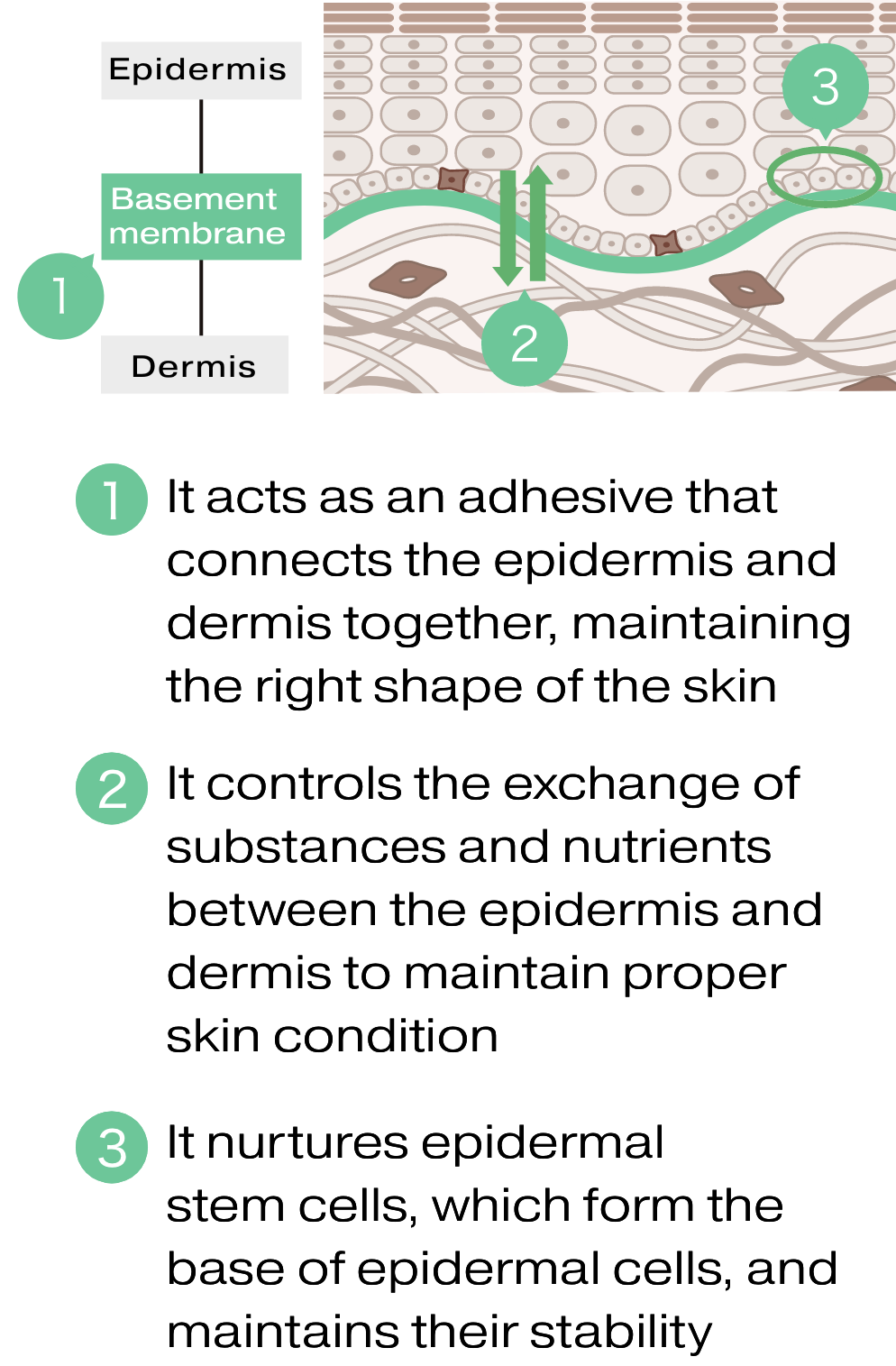
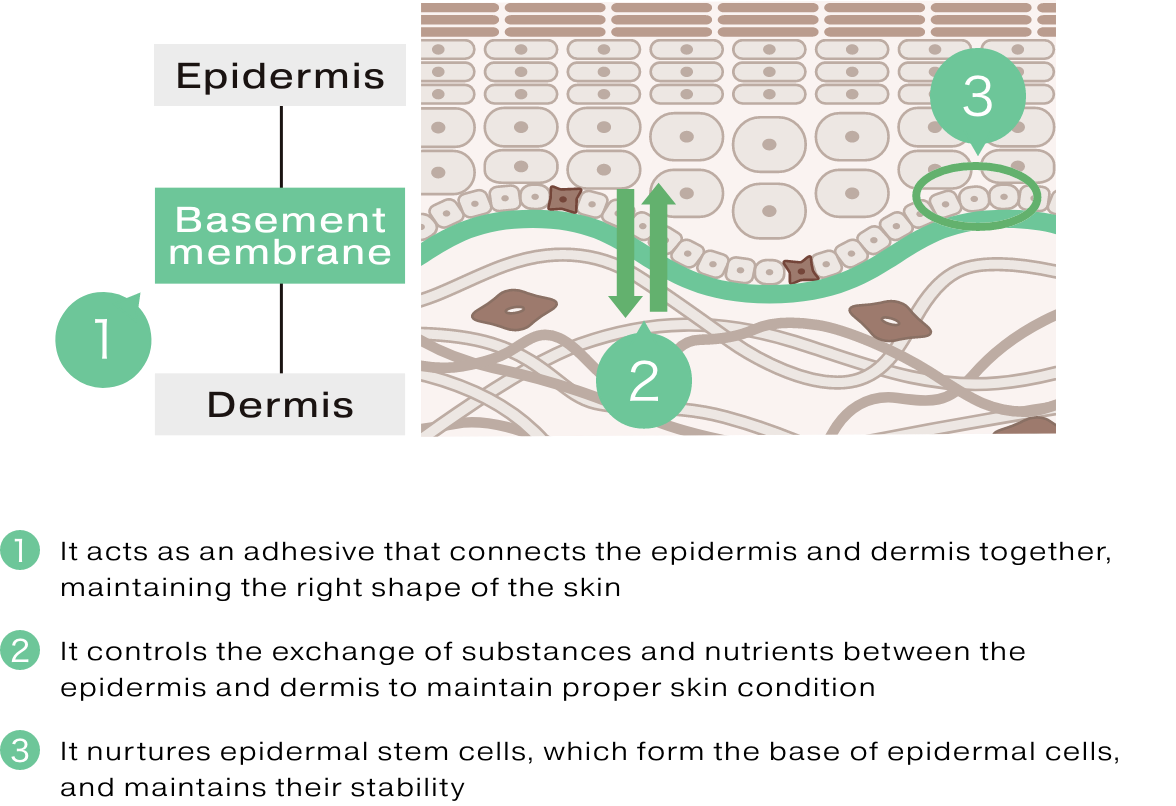
The basement membrane, or the source of the skin rejuvenation, connects the epidermis and dermis, controlling communication between them. It also acts like the soil that sustains the activity of epidermal stem cells, which generate new cells in the skin. It has been uncovered that the basement membrane has a significant impact on the beauty of the skin.
Shiseido found that damage to the basement membrane has already begun in the late 20s due to aging and UV rays. While the deterioration of the epidermis texture, which indicates the condition of the skin, progresses from 30s, Shiseido clarified that skin aging has begun, at an even earlier stage, from the basement membrane.
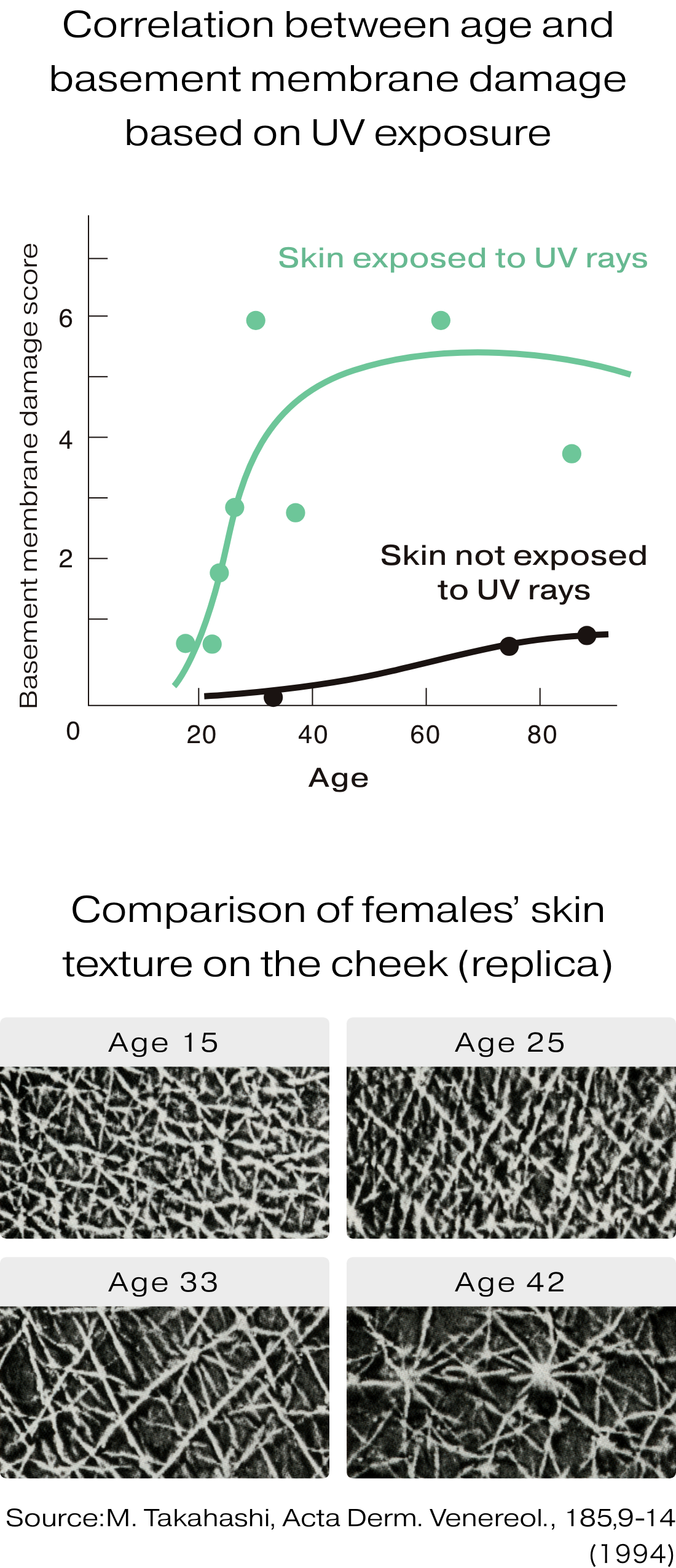
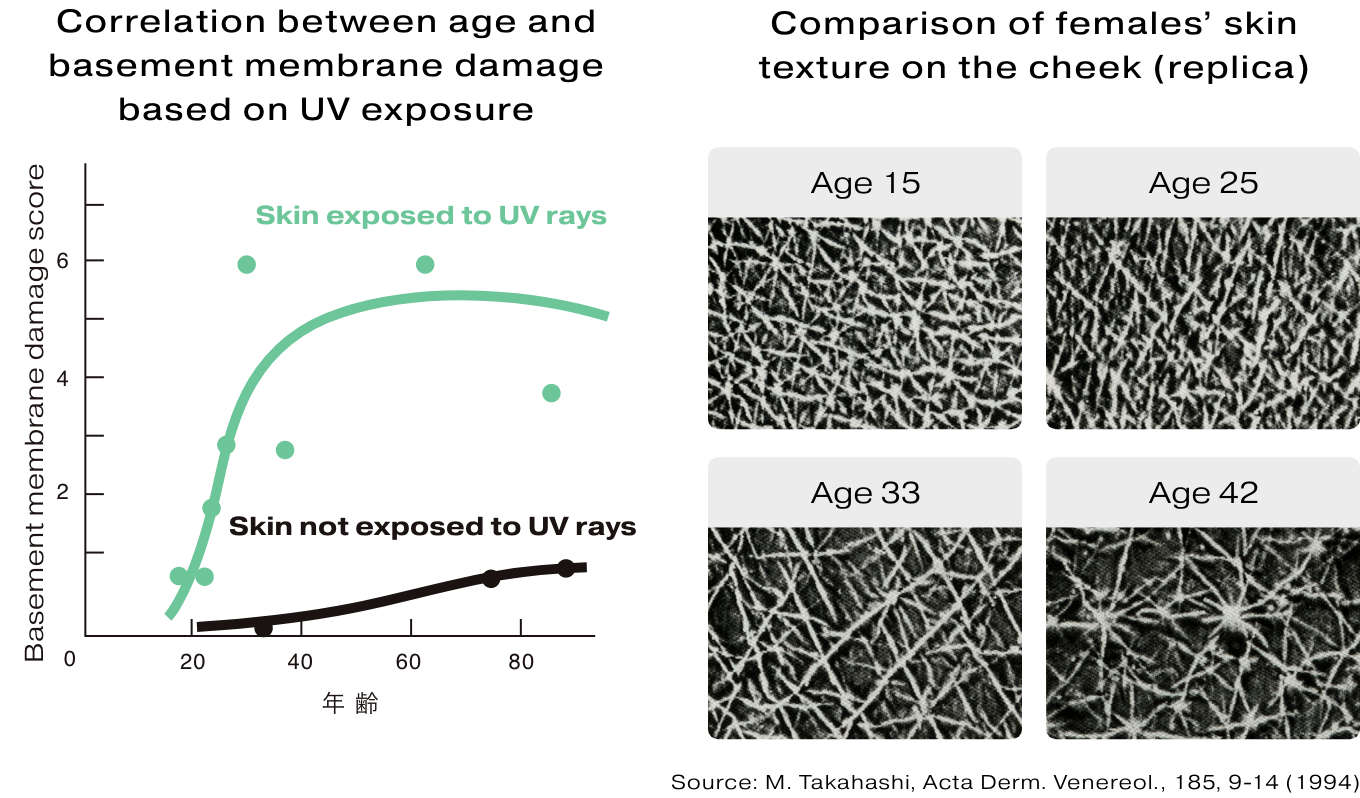
Shiseido discovered that the basement membrane plays an important role in maintaining epidermal stem cells, which are the key to the skin’s rejuvenation. When the basement membrane is damaged, the number of epidermal stem cells decreases. It also reduces the ability to produce epidermal cells; in turn, the skin becomes less healthy and the aging process progresses.
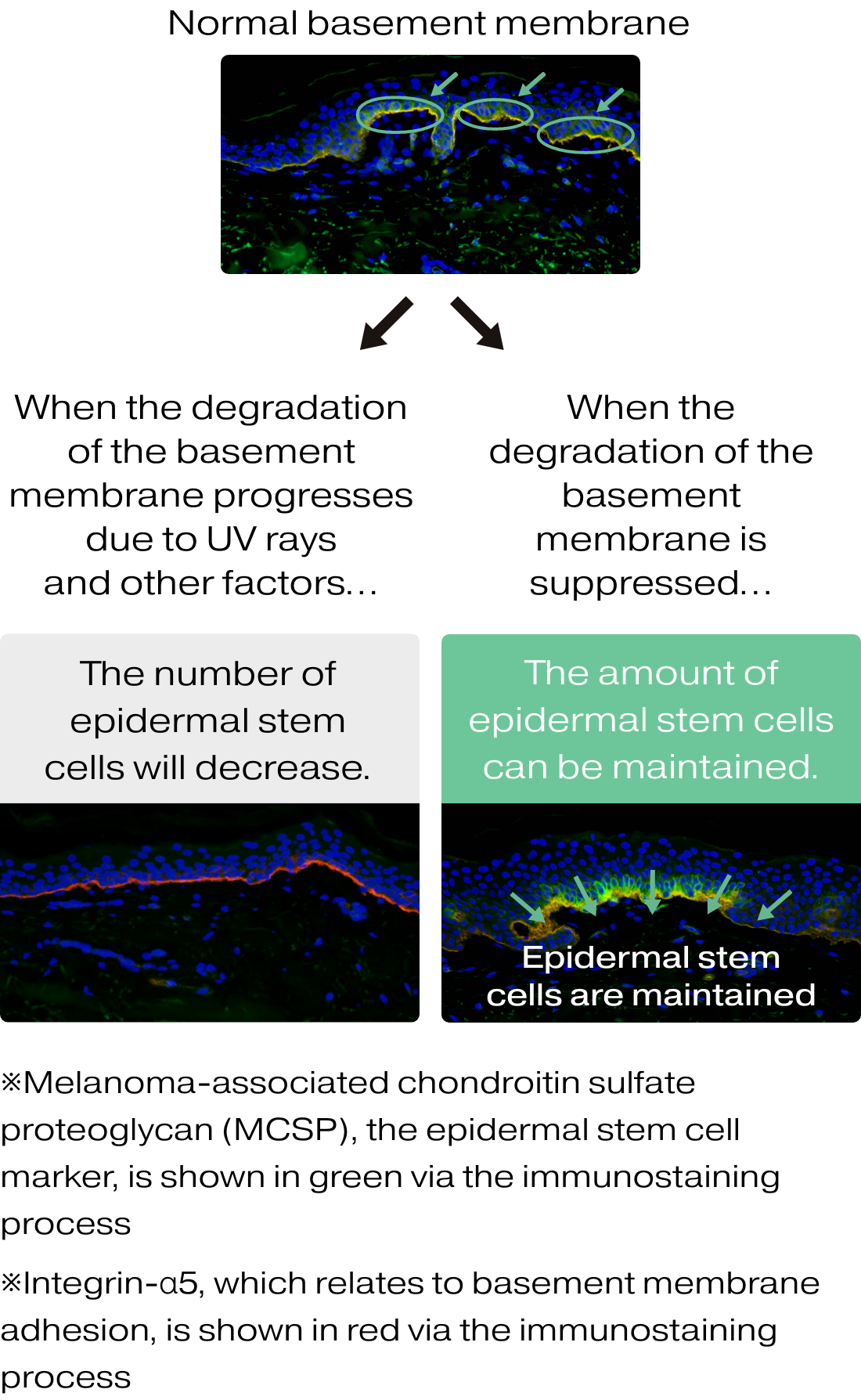
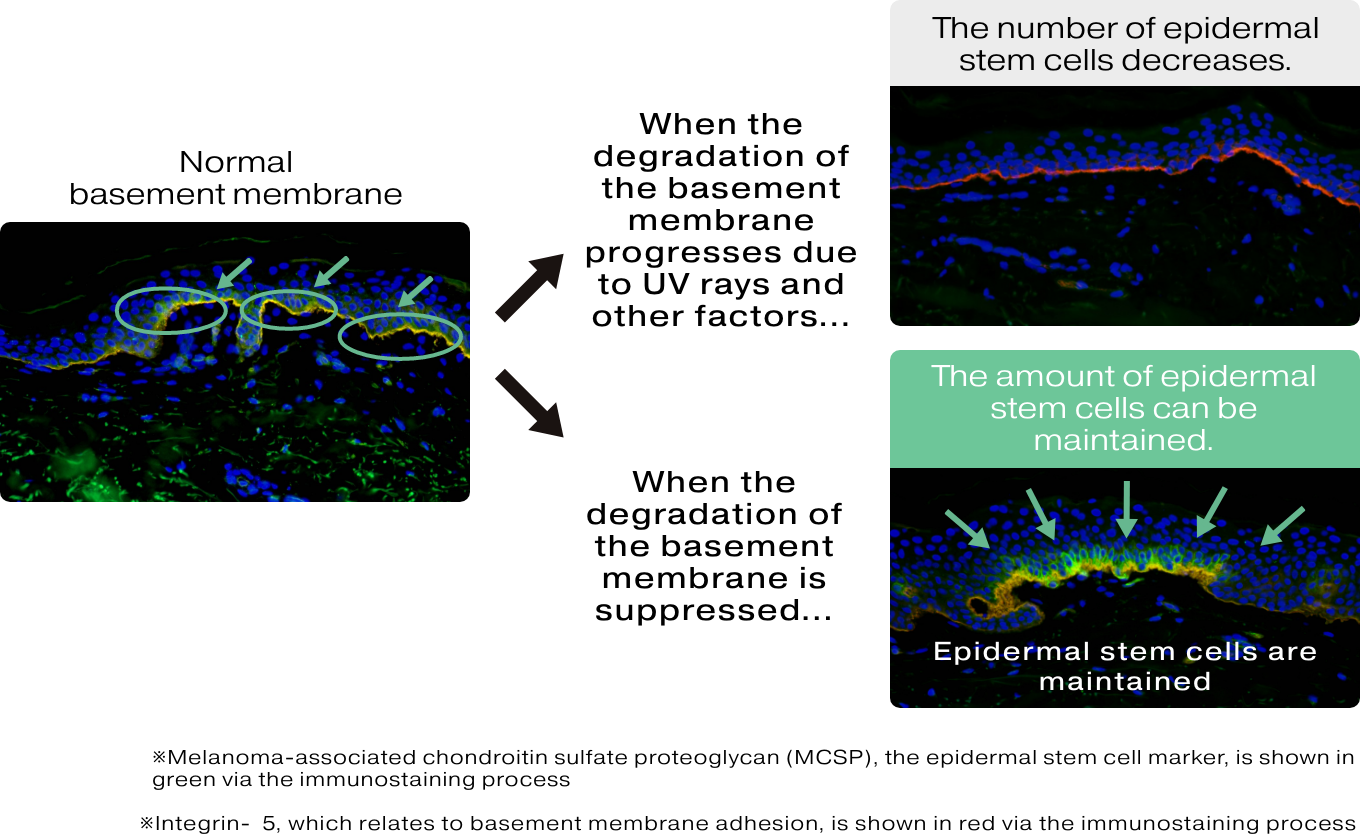
Shiseido has clarified that the enzymes heparanase and MMP-9, which degrade the components of skin, are activated by UV rays, causing damage to the basement membrane and promoting photoaging.
These enzymes degrade the basement membrane in two steps. First, heparanase degrades the sugar chains that cover and stabilize the basement membrane. Next, MMP-9 destroys the proteins that make up the basement membrane.
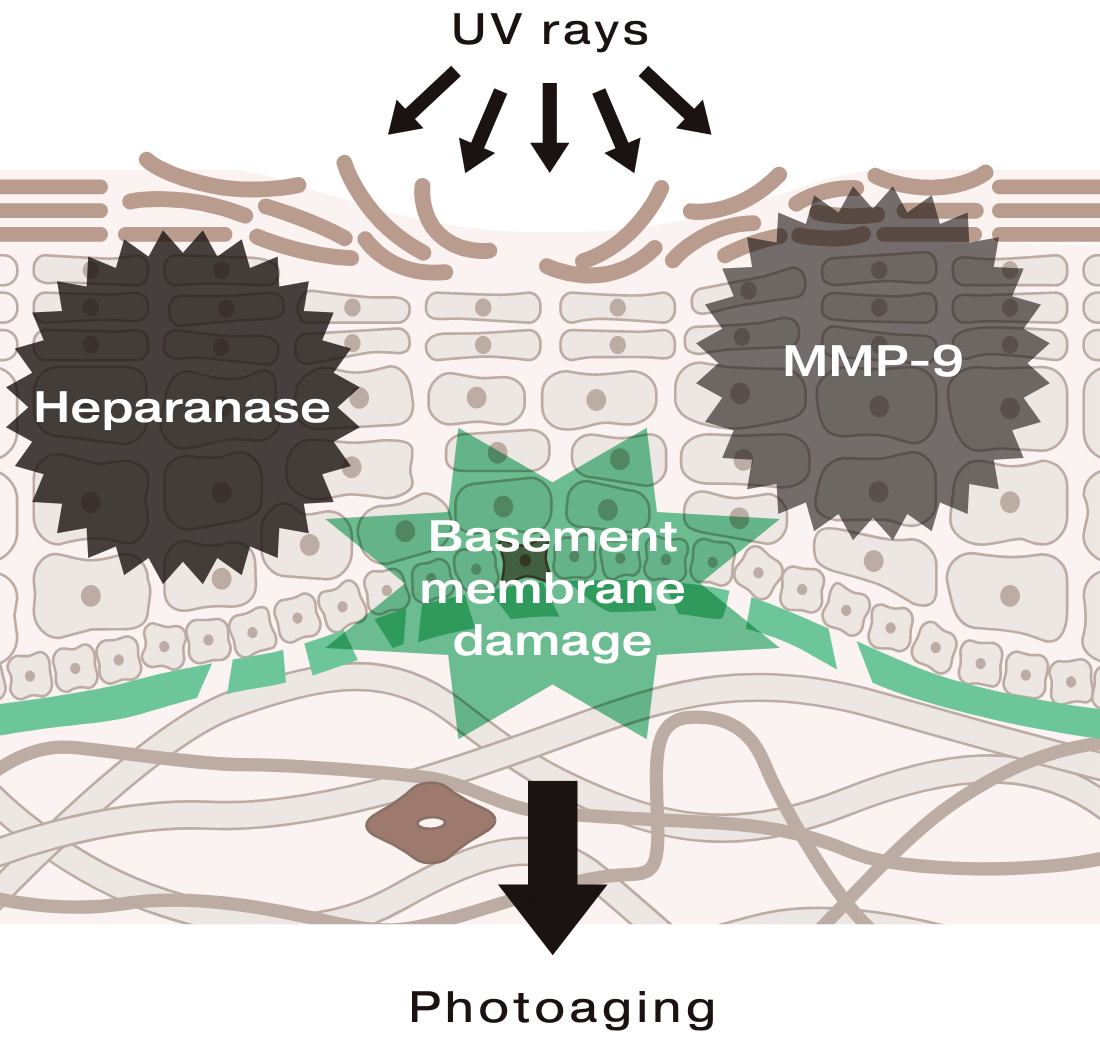



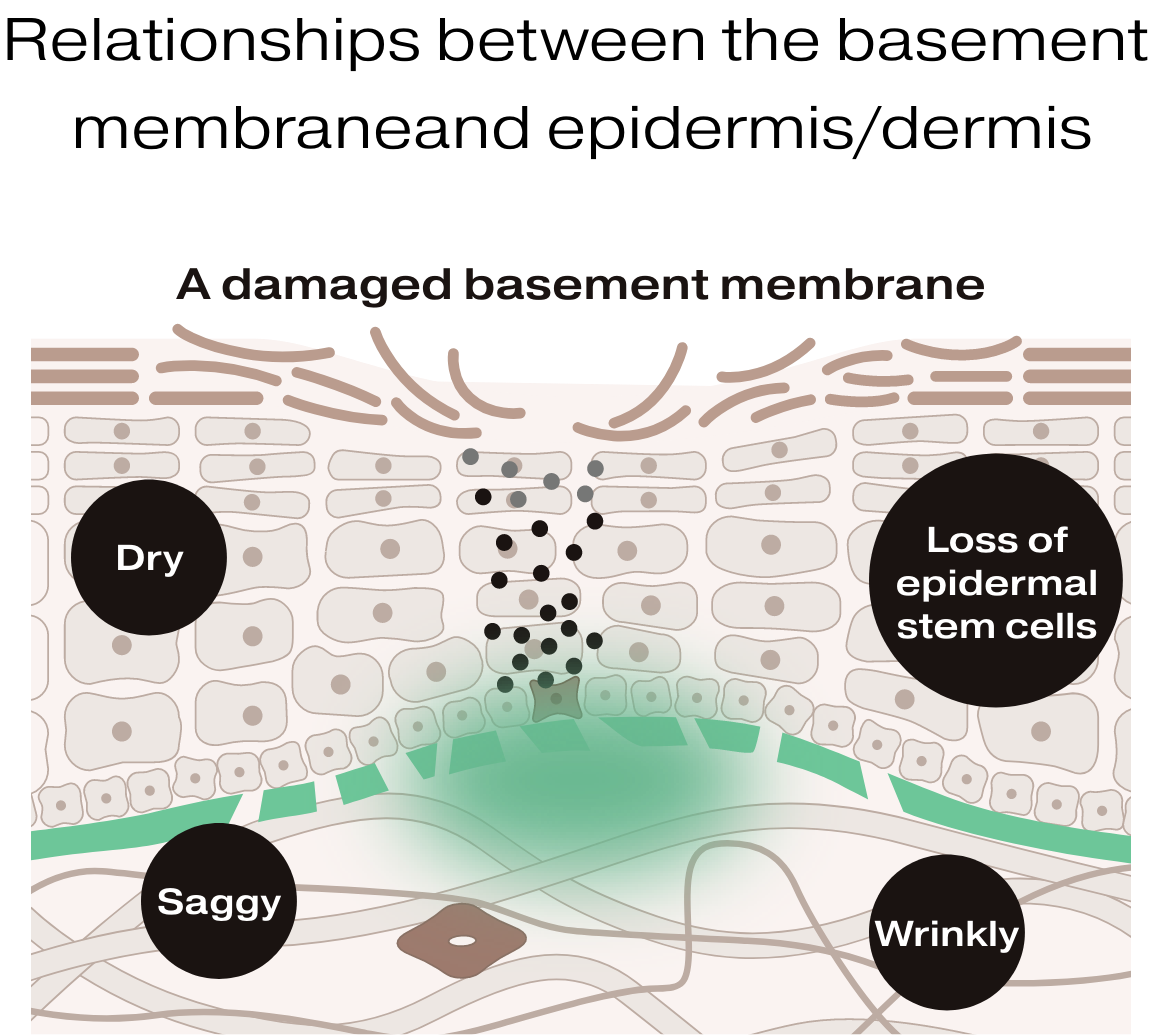

When the basement membrane is damaged by external stimulus, such as UV rays, the barrier functions of the epidermis become less effective, in turn causing dry or rough skin. At the same time, damage to the basement membrane can also cause the reduction of dermal collagen, leading to signs of aging such as wrinkles, and rough/saggy skin.